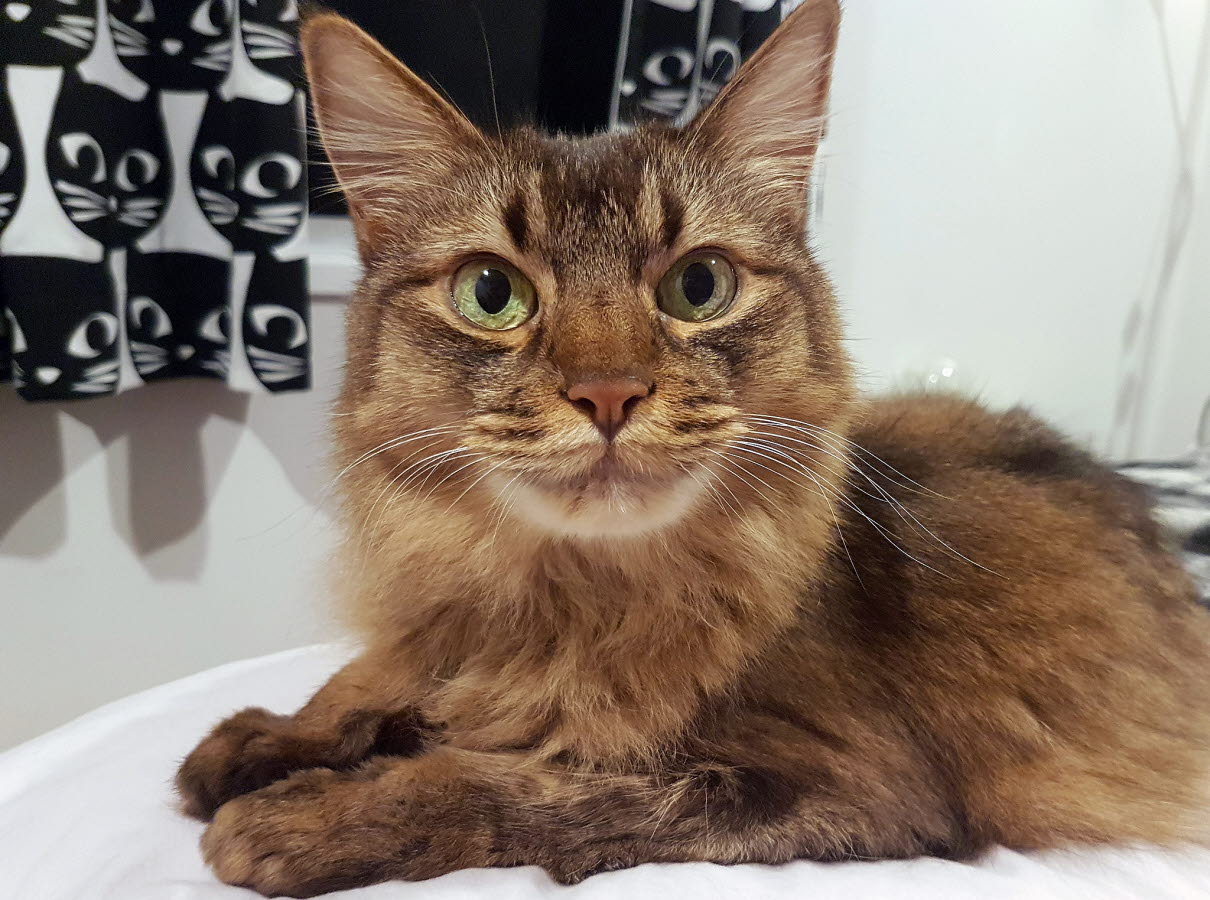
Have you ever had a cat in your lap, purring happily away as you give them chin scratches, and wondered why cats purr? It seems simple, as cats tend to purr when we give them pats and affection.
But not all cats purr when you pat them, and some cats purr at seemingly odd times, like sitting on a veterinary exam table.
It turns out, there is more to the purr than meets the eye. So, what does it mean when a cat purrs?
How do cats purr?
Cats don’t possess an anatomical structure which allows them to purr. Instead, they have mastered the ability to rapidly move the muscles of their diaphragm (the muscle which helps to breathe) and the muscles of their larynx (the voice box) at the same time. These muscles pulsate around 20 - 30 times per second during purring.
As a cat breathes, air coming into the chest bounces off these muscles to produce the purring noise. Just like a human voice, each cat has a unique purr, which explains why some purrs are like a rumbling train and others are soft and high-pitched.
Is a cat happy when it purrs?
A purr is not just a sign of pleasure or happiness. It is a way for cats to express themselves and give comfort when needed, as purring releases endorphins or the ‘happy’ brain chemicals.
This is why cats can purr during seemingly stressful situations like visits to the veterinarian or during birth, as it can indicate pain and distress.
However rest assured, if you best feline friend is curled up on your lap purring, it is probably a sign of pleasure.
Purring and communicating with humans
Although cats first purr when they are only a few days old, possibly to communicate their presence to their mother, when they are older they can use it to communicate with their owners.
A ‘solicitation purr’ can sometimes be heard when cats want our attention and is a combination of a purr and a meow. Perhaps you have come home to a hungry cat and hear this purr/meow, as they communicate their desire to be fed.
These solicitation purrs have actually been likened to the cry of a human baby, as they occur at high frequencies and appear to stimulate similar caregiving behaviour in humans.
There really is more to a purr than first glance. Self-soothing, instructing humans, communication and contentment are just some of the effects of this feline superpower. So next time you give your cat chin scratches and they start purring, think about how incredible the purr really is.
